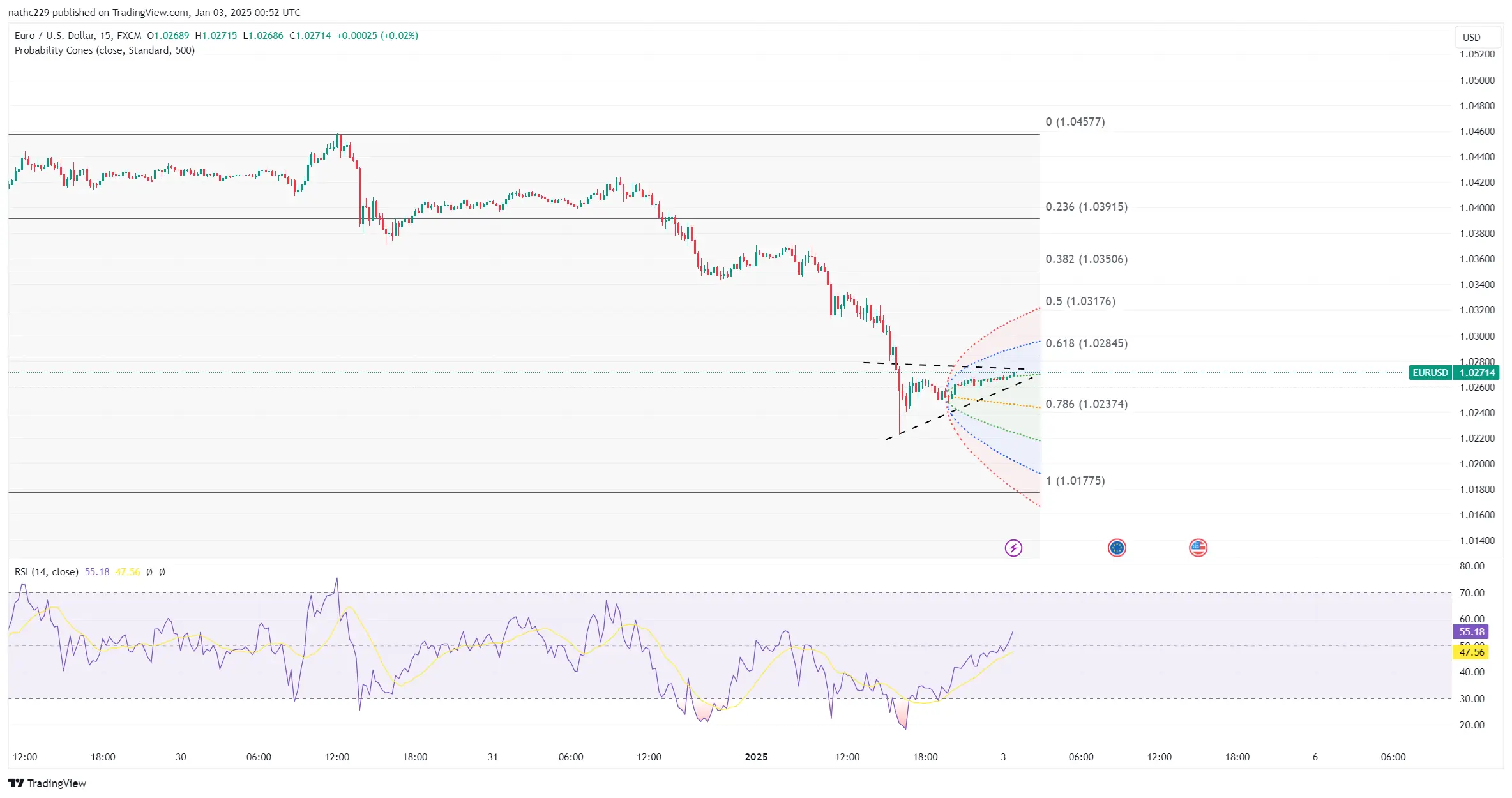EUR/USD Slumps to Multi-Year Low as U.S.-Euro Zone Divergence Widens

EUR/USD plunged to a 26-month low on Tuesday, extending its decline to 1.02248 amid mounting evidence of economic divergence between the U.S., euro zone, and China. Weak December PMI data underscored the euro zone’s struggles, with manufacturing activity contracting more than expected at 45.1. Similarly, China’s Caixin PMI dropped to 50.5, signaling slowing factory growth. In contrast, U.S. data painted a brighter picture, with jobless claims falling and the S&P Global manufacturing PMI indicating resilience. The contrasting data highlighted widening Fed-ECB policy paths, with the Fed potentially holding rates steady longer while the ECB considers accelerated easing to stimulate growth.
Technical indicators suggest EUR/USD’s bearish momentum remains strong. The pair is trading below its 5-day moving average and a key trendline from November lows, with falling RSI confirming downward pressure. Immediate support lies at the 1.02248 low, with a break below targeting 1.0200 and potentially 1.0150. On the upside, resistance is seen at 1.03755, the overnight high, and the 5-DMA near 1.0400. The lack of buying interest during rebounds suggests continued bearish dominance, with further losses likely if current trends persist.
Focus now shifts to upcoming economic data, with German unemployment figures and U.S. ISM manufacturing PMI set for release on Friday. Any signs of resilience in the U.S. economy could further widen yield spreads, driving EUR/USD toward the psychological 1.0200 level. On the other hand, positive euro zone data could stabilize the pair temporarily, though the overarching bearish narrative limits upside potential. With economic divergence favoring the dollar, EUR/USD’s path of least resistance remains downward.

